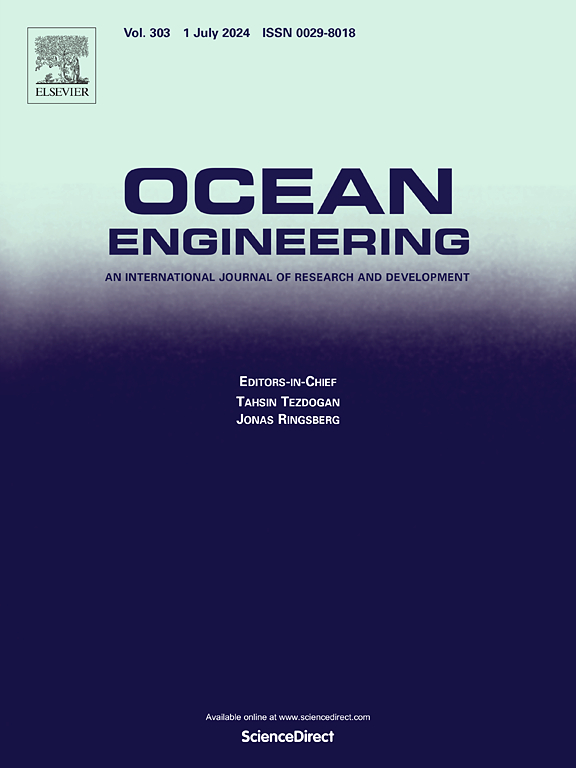Fluid-structure interaction simulation of floating structure interacting with the combined effect of wave-current-earthquake based on CFD method
IF 4.6
2区 工程技术
Q1 ENGINEERING, CIVIL
引用次数: 0
Abstract
This study investigates the dynamic interaction between floating structures and surrounding water under combined wave–current–earthquake excitations using Computational Fluid Dynamics (CFD). A two-dimensional fully coupled fluid–structure interaction (FSI) model is developed and validated based on the incompressible Reynolds-Averaged Navier–Stokes (RANS) equations with a standard k–ε turbulence model, implemented in ANSYS Fluent. The model is used to simulate the complex dynamic behavior of a floating structure subjected to multiple hazard excitations. First, the coupled effects of waves, currents, and seismic motions on the floating structure are examined through numerical simulation. The model captures the oscillatory flow fields induced by external loads and provides detailed insights into the resulting hydrodynamic responses. The influences of wave–current interaction and earthquake–wave coupling on wave run-up and hydrodynamic pressure around the structure are specifically analyzed. Moreover, the nonlinear characteristics of hydrodynamic forces under multi-hazard conditions are discussed. Finally, a substructure analysis method incorporating fluid–structure interaction is proposed to evaluate the structural motion response under combined environmental loads. The findings provide a theoretical basis for the design and analysis of floating structures in seismically active marine environments.
基于CFD方法的波浪-流-震联合作用下浮式结构流固耦合模拟
利用计算流体力学(CFD)方法研究了波浪-地震联合激励下浮式结构与周围水的动力相互作用。基于不可压缩reynolds - average Navier-Stokes (RANS)方程和标准k -ε湍流模型,在ANSYS Fluent中实现了二维完全耦合流固耦合(FSI)模型。该模型用于模拟浮体结构在多重危险激励下的复杂动力行为。首先,通过数值模拟研究了波浪、水流和地震运动对浮式结构的耦合效应。该模型捕获了由外部负载引起的振荡流场,并提供了对所产生的水动力响应的详细见解。具体分析了波流相互作用和地震波耦合对结构周围波浪爬升和动水压力的影响。此外,还讨论了多灾害条件下水动力的非线性特性。最后,提出了一种考虑流固耦合作用的子结构分析方法,用于评价结构在复合环境荷载作用下的运动响应。研究结果为地震活跃海洋环境中浮式结构的设计和分析提供了理论依据。
本文章由计算机程序翻译,如有差异,请以英文原文为准。
求助全文
约1分钟内获得全文
求助全文
来源期刊

Ocean Engineering
工程技术-工程:大洋
CiteScore
7.30
自引率
34.00%
发文量
2379
审稿时长
8.1 months
期刊介绍:
Ocean Engineering provides a medium for the publication of original research and development work in the field of ocean engineering. Ocean Engineering seeks papers in the following topics.
 求助内容:
求助内容: 应助结果提醒方式:
应助结果提醒方式:


